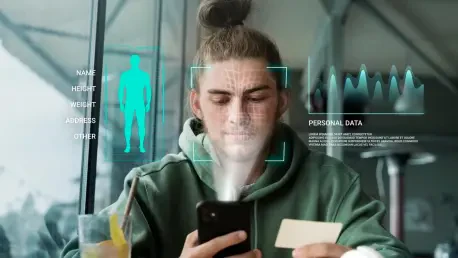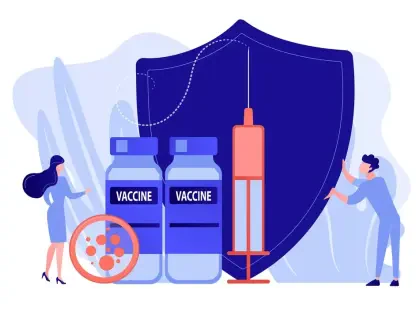In the complex realm of digital identity, Donald Gainsborough stands out as a seasoned expert and leader in policy and legislation. As the head of Government Curated, he brings invaluable insights into the evolving landscape of identity verification technologies. The interview delves into various aspects of identity management, from the Real ID Act’s impact on security standards in the U.S. to the promising future of mobile driver’s licenses and digital IDs. Gainsborough discusses technological challenges, opportunities, and the nuances of integrating advanced identity verification systems.
Can you explain the impact of the Real ID Act on identity verification in the U.S.?
The Real ID Act has significantly shifted the identity verification landscape by imposing uniform security standards across the nation, enhancing the security of driver’s licenses and identification cards. This federal mandate was introduced following recommendations from the 9/11 Commission to mitigate risks and bolster protection against identity-related threats.
What are the security standards outlined in the Real ID Act for driver’s licenses?
The Real ID Act establishes stringent criteria for state-issued IDs, requiring specific documentation and features to provide reliable security. Key standards include the integration of machine-readable technology, secure issuance processes, and identity authentication protocols, ensuring that IDs are not only harder to counterfeit but also more efficient in verification processes.
How has the implementation of the Real ID Act been impacted by technological delays and the COVID-19 pandemic?
Implementation of the Real ID Act has faced various hurdles, notably technological setbacks and disruptions caused by the COVID-19 pandemic. These factors have delayed the rollout, affecting preparations countries were making for the nationwide enforcement deadline. As a result, many citizens haven’t transitioned to Real ID-compliant licenses, heightening urgency as the deadline approaches.
What challenges do individuals face if they do not have a Real ID by the upcoming deadline?
Without a Real ID-compliant license by the deadline, individuals will encounter restrictions during travel within the U.S., particularly in boarding domestic flights as they won’t meet Transportation Security Administration requirements. Additionally, access to federally regulated facilities demanding such identification would be hindered.
What process do individuals need to follow to obtain a Real ID-compliant driver’s license?
Acquiring a Real ID-compliant driver’s license involves several steps, starting with a visit to the Department of Motor Vehicles. Applicants must provide specific documents, such as a valid ID, passport, or birth certificate, proof of Social Security number and date of birth, along with two proofs of state residency. This thorough procedure ensures compliance with the enhanced security standards set by the Act.
How would you describe the current landscape of identity verification in the U.S.?
The U.S. identity verification framework predominantly hinges on visual assessments and tangible documentation, which can be constraining and fragmented, given the lack of a national ID card system. Each state operates independently, complicating efforts to form a cohesive national verification mechanism.
What role do visual cues and physical documents play in today’s identity verification process?
Visual cues and physical documents remain central to identity verification processes, serving as primary means of confirming one’s identity. These elements demand sophisticated checks to ensure authenticity, yet they can be cumbersome and susceptible to human error, highlighting the need for digital advancements.
Why is the absence of a national ID card in the U.S. viewed as complicating identity verification?
The absence of a uniform national ID card complicates identity verification as it results in disparate systems across states, each with unique protocols. This fragmentation can impede seamless verification processes, posing challenges to ensure interoperability and consistency in identity validation nationwide.
How do mobile driver’s licenses (mDLs) and digital IDs promise to change the verification landscape?
Mobile driver’s licenses and digital IDs are poised to revolutionize identity verification by offering digital solutions that integrate seamlessly into daily life. By digitizing credentials and securely storing them on smartphones, these technologies promise enhanced portability, convenience, and security over conventional methods.
What are the advantages of digitizing identity credentials and storing them on smartphones?
Digitizing identity credentials introduces substantial benefits, including heightened security through biometric encryption and improved user experience, simplifying interactions like airport check-ins and rentals. This shift aims to streamline verification while reducing reliance on physical documentation.
How is the adoption of digital IDs progressing in the U.S. compared to Europe and parts of Asia?
The U.S. is gradually moving towards digital ID adoption, yet lags behind regions like Europe and Asia where such systems are already established. Countries like India have successfully implemented nationwide biometric ID systems, showcasing the scalability and efficacy of digital identity solutions.
Can you provide examples of countries that have implemented efficient digital ID systems?
Countries like India, Saudi Arabia, and Indonesia stand out with robust digital ID frameworks. India’s Aadhaar system, for instance, seamlessly integrates biometric data, enabling quick and secure identity verification, setting a benchmark for other countries to follow.
What are the key challenges with transitioning to mobile driver’s licenses and digital IDs?
Transitioning to mobile driver’s licenses involves tackling various challenges, like ensuring secure data connectivity to safeguard personal information, fostering interoperability across state and international lines, and countering fraud risks that accompany digital identity ecosystems.
How do data connectivity and privacy issues affect digital identity ecosystems?
Data connectivity and privacy are pivotal in digital identity ecosystems, requiring secure channels to transmit sensitive information without compromise. Privacy concerns must be meticulously addressed to maintain trust and secure personal data against breaches and misuse.
What steps need to be taken to ensure interoperability across states and countries for mDLs?
Ensuring interoperability demands establishing standardized protocols and cohesive frameworks that allow digital IDs to be universally recognized and integrated across varying jurisdictions. Collaboration among states and international entities is crucial to achieve this seamless operability.
What fraud prevention strategies can be employed to protect digital identity systems?
Implementing advanced technologies like AI-based liveness detection and biometric encryption can fortify digital ID systems against fraud. Collaborative efforts between government and private sectors are vital to developing comprehensive strategies that outpace malicious activities.
How do mobile driver’s licenses improve the user experience in processes like airport check-in and car rentals?
Mobile driver’s licenses significantly enhance user experiences by removing the need for physical document presentation. They enable instantaneous verification via digital means, streamlining processes like airport check-ins and car rentals for quicker, more efficient service.
What advanced security features can digital IDs incorporate to enhance their resistance to counterfeiting?
Digital IDs can incorporate cutting-edge security features like biometric data encryption, blockchain integration, and machine learning patterns, building resistance against counterfeiting attempts and ensuring robust identity protection.
How does real-time verification against government databases help in reducing identity theft and fraud?
Real-time verification offers immediate confirmation of identity data against trusted government databases, drastically reducing the possibilities of identity theft and fraud by promptly identifying discrepancies and unauthorized attempts.
What are your recommendations for businesses to prepare for the future of mobile driver’s licenses and digital IDs?
Businesses should invest in digital infrastructure and staff training to acclimate to the forthcoming advancements in identity verification. Integrating digital IDs into their systems is essential to remain competitive, streamline processes, and enhance customer experience.
What proactive measures should organizations and governments adopt for the future of identity verification?
Organizations and governments must prioritize digital transformation investments, forge collaborative alliances, and focus on security improvements to prepare effectively for the future of identity verification, ensuring compliance and streamlined integrations.
How can collaboration between government agencies, private companies, and industry groups promote digital identity adoption?
Collaboration fosters the sharing of ideas, resources, and expertise, paving the way for establishing standardized frameworks essential for digital identity adoption. It encourages innovation in protocols and security measures, expediting the transition to digital ecosystems.
Why is it essential to prioritize security in the development of mobile driver’s licenses and digital IDs?
Security is paramount in digital systems, as they handle sensitive personal information. Robust security ensures confidentiality and trust, which is vital in preventing data breaches, unauthorized access, and maintaining user confidence in digital identities.
What steps can be taken to educate consumers on the benefits of digital IDs and encourage their adoption?
Consumer education can be facilitated through campaigns highlighting the security, convenience, and efficiency offered by digital IDs. Efforts to illustrate tangible benefits in daily interactions can significantly drive adoption, aligning consumer habits with technological progress.
What impact will the transition to mobile driver’s licenses have on sectors like travel, hospitality, and banking?
The transition to digital identification will streamline verification processes in travel, hospitality, and banking, fostering expedited service, reduced wait times, and heightened security measures, ultimately transforming customer experience and operational efficiency in these sectors.
How important is it for travelers to understand the Real ID requirements to avoid disruptions after the deadline?
Understanding Real ID requirements is crucial for travelers to ensure seamless journey plans, avoiding setbacks at domestic security checkpoints post-deadline. Adequate information dissemination can preempt inconvenience during important inter-state travels.
What breakthroughs are necessary to overcome bureaucratic barriers in implementing digital identities?
Achieving breakthroughs involves dismantling bureaucratic constraints by fostering collaboration, revising regulatory compliances, encouraging innovation, and harmonizing state protocols, collectively enabling smoother and more efficient digital identity implementations in the future.









